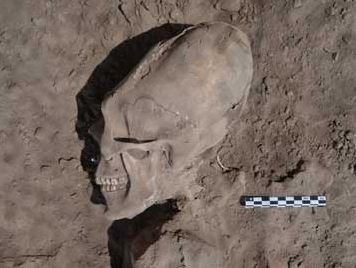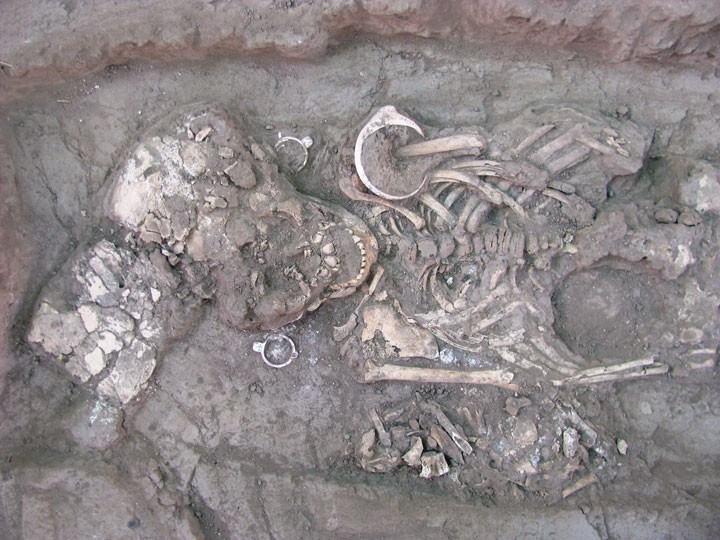Ancient Alien-Like Skulls Found in Mexico [PHOTOS and VIDEO]

Archaeologists have discovered a collection of elongated human skulls at an ancient burial site in Sonora, Mexico, believed to be nearly 1,000 years old. The skulls, it appears, were intentionally deformed during childhood.
Binding young children's heads and causing the bones to develop and grow in an elongated manner was a common practice in ancient times. The results resemble the classic image of aliens as represented in countless Hollywood films.
The burial site in Mexico yielded 25 sets of human remains, 13 of which had deformed craniums and five dental mutilations. In addition, of the 25, 17 were children between five months and 16 years of age.
"Cranial deformation has been used by different societies in the world as a ritual practice, or for distinction of status within a group or to distinguish between social groups," Cristina Garcia Moreno, with the Arizona State University, explained.
However, we do not yet know why these particular skulls were deformed.

"The most common comment I've read from people that see the pictures of cranial deformation has been that they think that those people were 'aliens,'" Moreno added, "I could say that some say that as a joke, but the interesting thing is that some do think so. Obviously we are talking about human beings, not aliens."
Meanwhile, the excavation also uncovered ornaments like bangles, nose rings, earrings and pendants, made from shells.
"This unique find shows a mix of traditions from different groups of northern Mexico. The use of ornaments made from sea shells from the Gulf of California had never been found before in Sonoran territory and this discovery extends the limit of influence of Mesoamerican peoples farther north than has been previously recorded," Moreno concluded.
The excavation site was discovered in 1999, by residents of a nearby village. It is believed to be the first pre-Hispanic cemetery in the region. Moreno and her colleagues plan to submit their findings to one of two journals, either American Antiquity or Latin American Antiquity.
[Video Courtesy: Instituto Nacional de Antropología e Historia / YouTube]
© Copyright IBTimes 2025. All rights reserved.





















